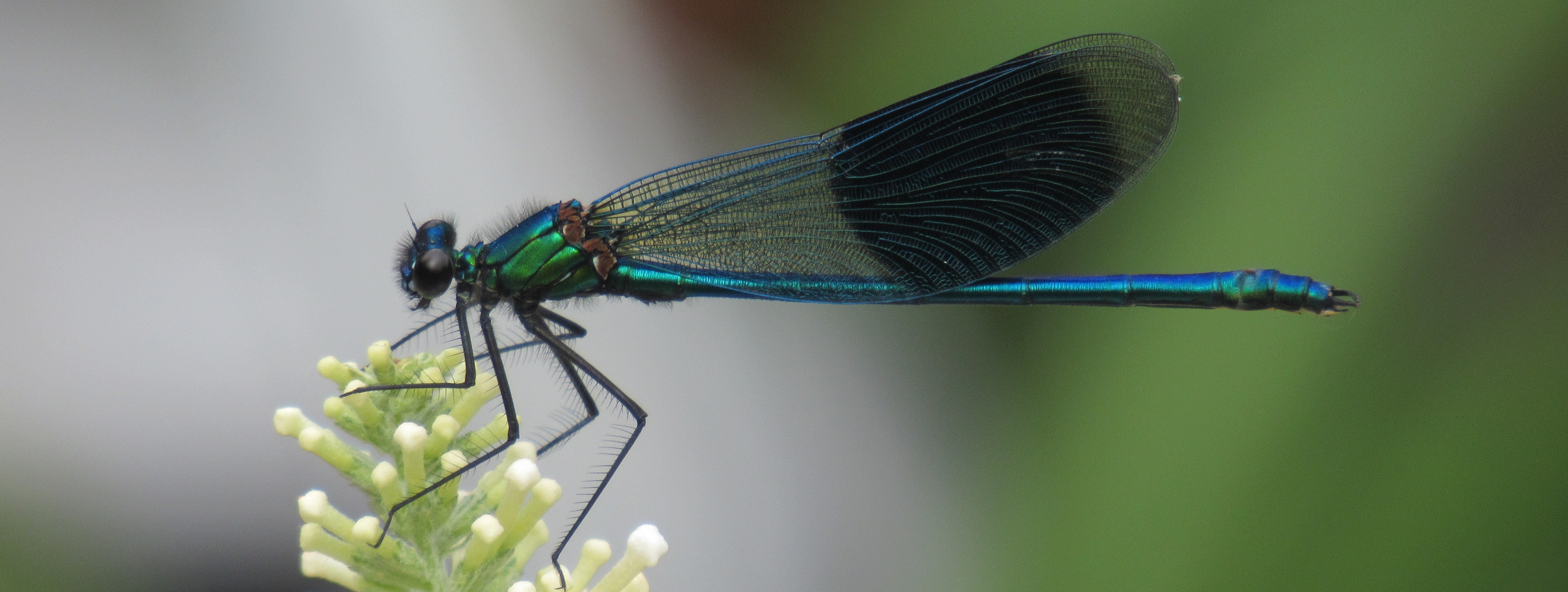 Banded demoiselle (George Ashton 2018)
Banded demoiselle (George Ashton 2018)
DRAGONFLIES AND DAMSELFLIES
The Community Woodland has always been a good place to see dragonflies where they can be seen flying over the vegetation or resting on seed heads or low tree branches. Now we have a pond, they can also be seen perching around the margin of the pond or egg-laying in the water.
For more information about dragonflies and damselflies, see www.british-dragonflies.org.uk
DRAGONFLIES By Sue Ashton
Broad-bodied Chaser
Broad-bodied Chasers are often the first dragonflies to colonise new ponds and we were delighted to see a male take up residence at the pond in May 2019. Broad-bodied Chasers are easily recognised by their flattened abdomens which are pale blue in males and a golden yellow/brown in females. Their flight period is May to July/early August.
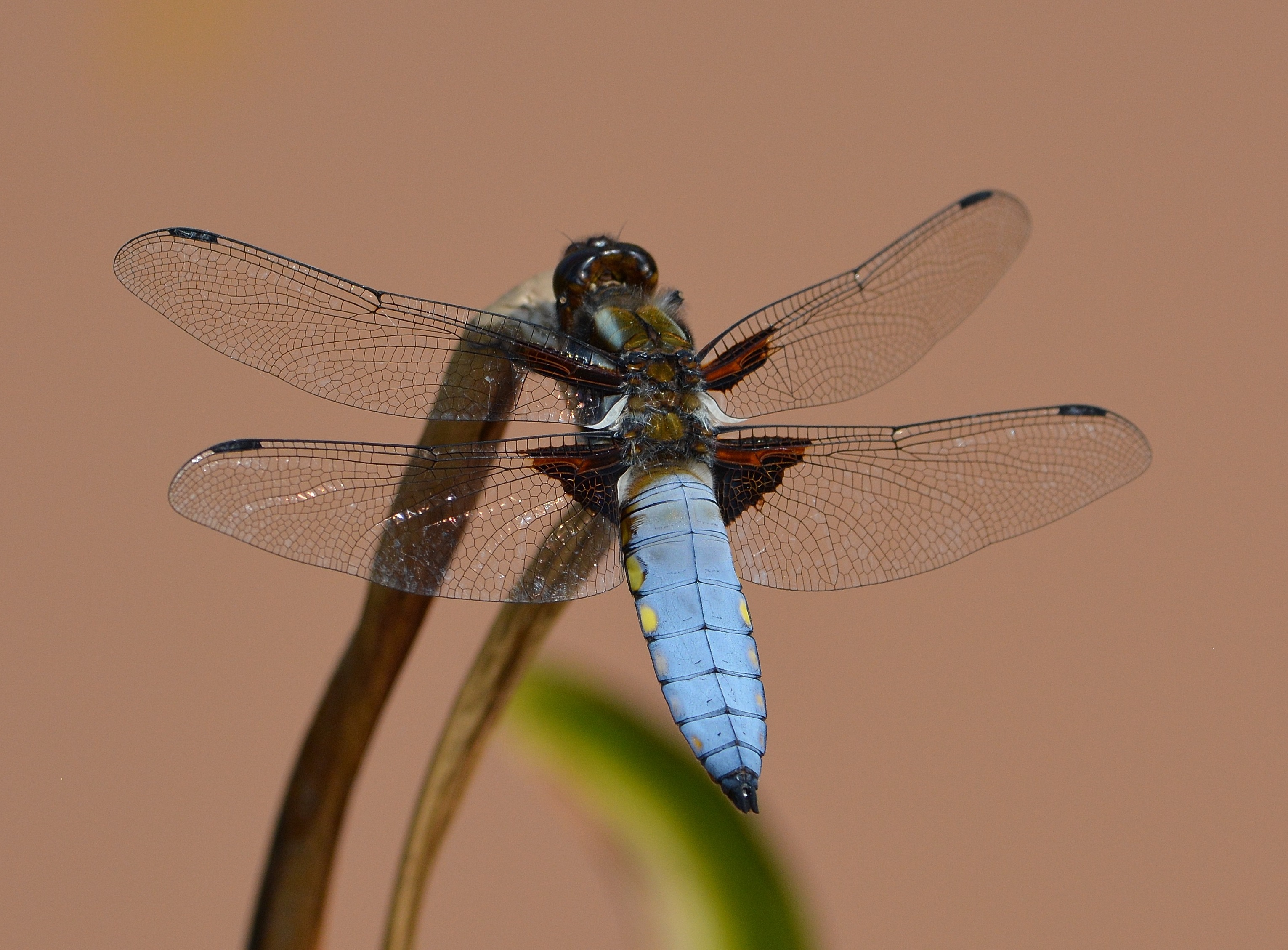
Male Broad-bodied Chaser perching at the pond in May 2019 (photo Tony Hoskin).
In June 2019, a female was seen several times egg laying at the pond, hovering over the water near some vegetation and dipping her abdomen into the water to release her eggs (photo Sue Ashton).
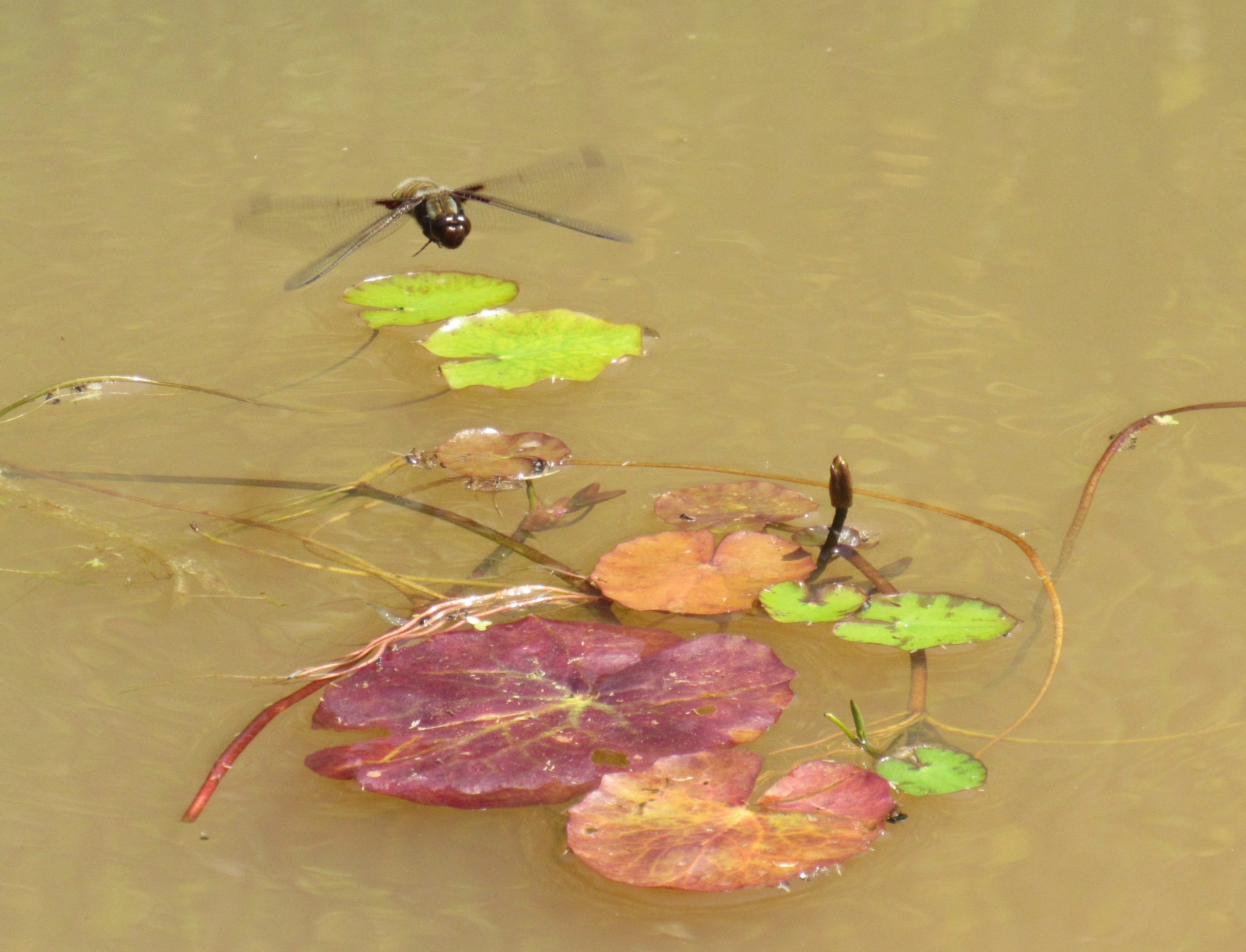
Both sexes are striking dragonflies.
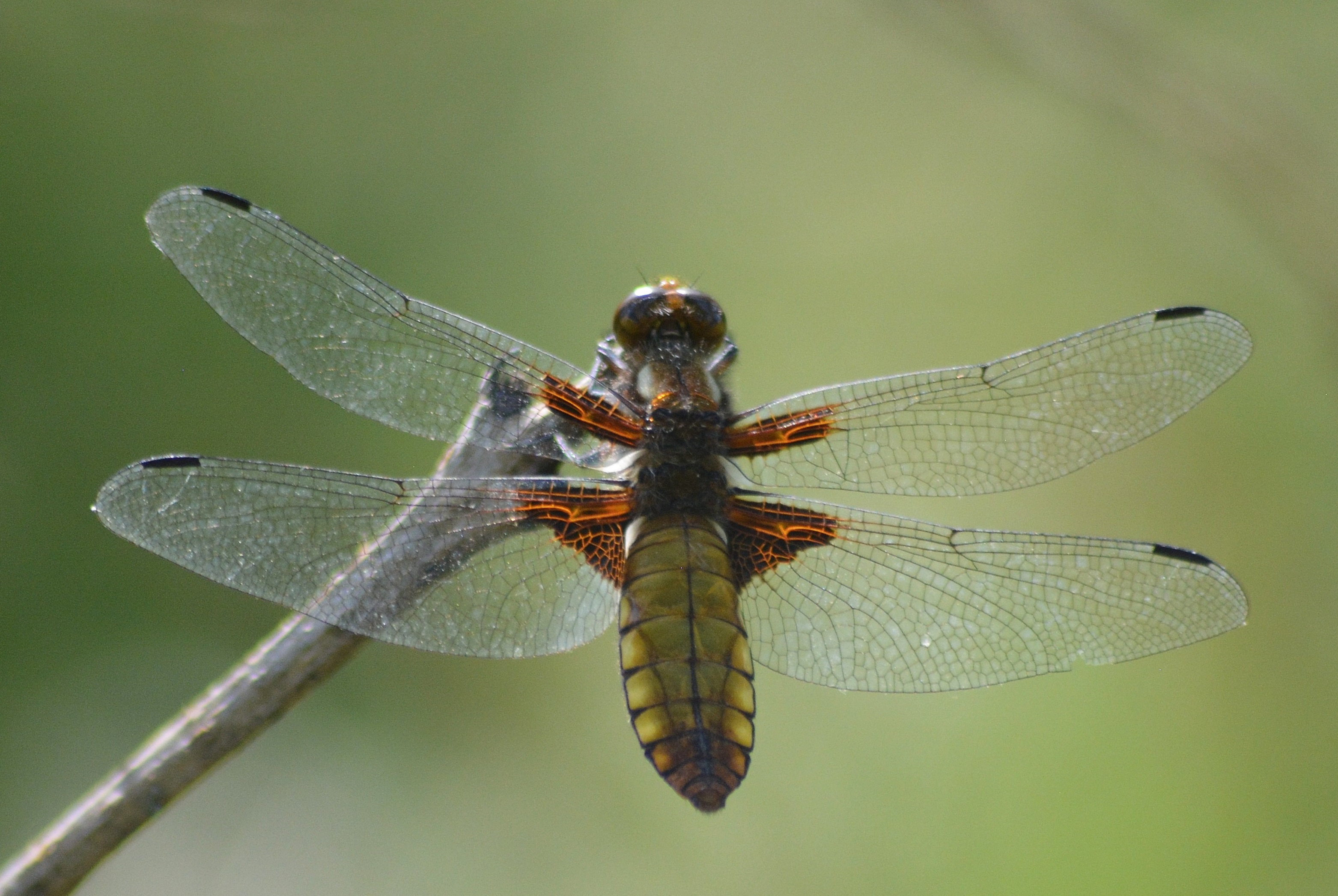
Female Broad-bodied Chaser perching at the pond in June 2019 (photoTony Hoskin).
Scarce Chaser
A medium-sized dragonfly which emerges at the end of May and has been seen at the woodland and on the moor in June. Like the Broad-bodied Chaser, it has a flattened abdomen which is blue in males and a golden orange in females though the abdomen is not as wide as the Broad-bodied Chaser and in the female there is a dark marking that extends from the tip up the abdomen. Immature males are the same colour as females and mature females can be quite dark so colour varies with age.
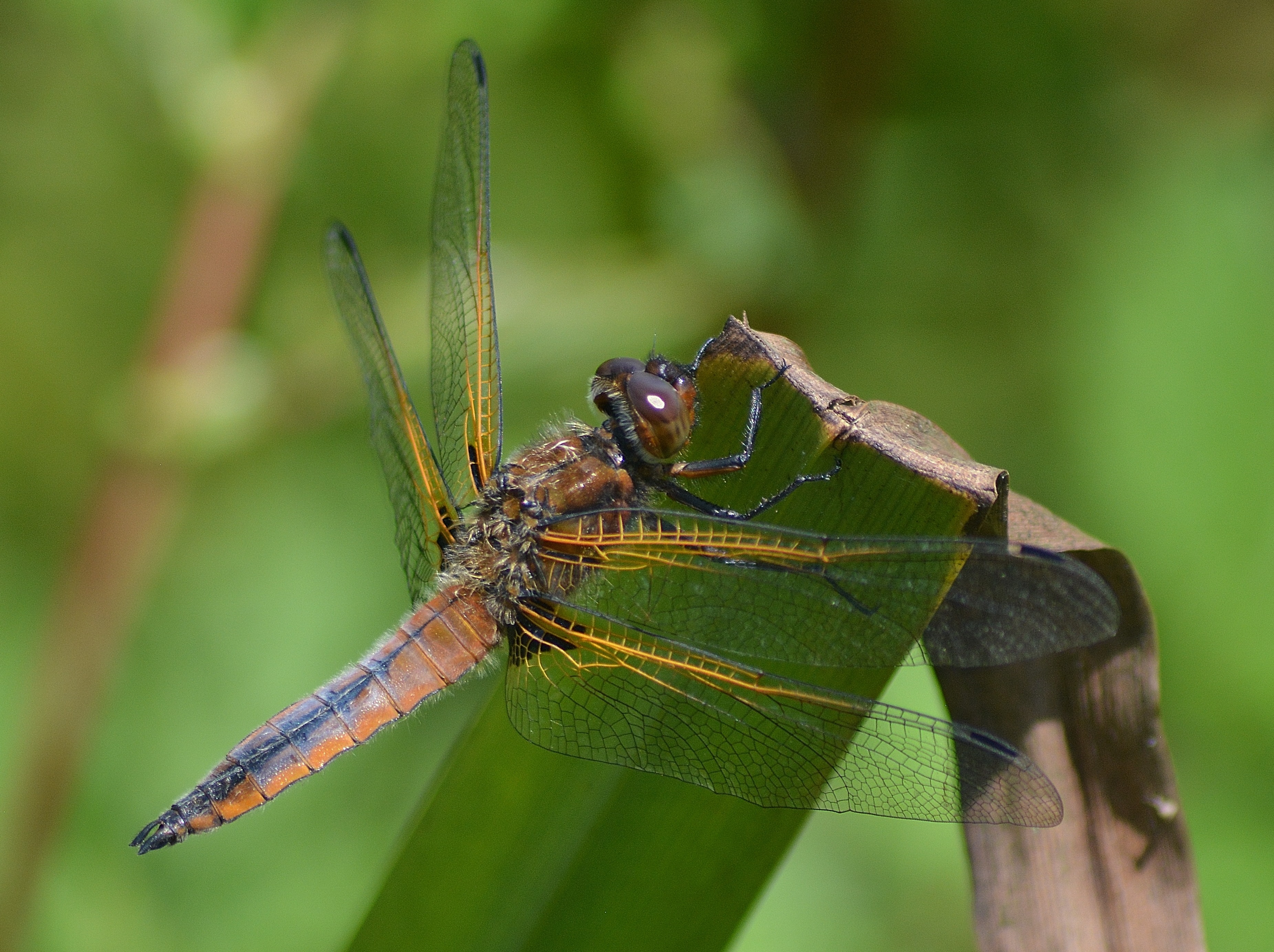
Female Scarce Chaser taken on the moor in June 2019 (photo Tony Hoskin)
It is not a common dragonfly but as it is a dragonfly of lowland river floodplains Somerset is one of the regions where it occurs.
Emperor Dragonfly
We were very pleased to see a female Emperor Dragonfly laying eggs in the pond in July 2019. Emperor Dragonflies are large and impressive insects. Their flight period is June to August. Both sexes have a green thorax, but while the male has a bright blue abdomen, the female has a green abdomen though this may become blue in warm weather.
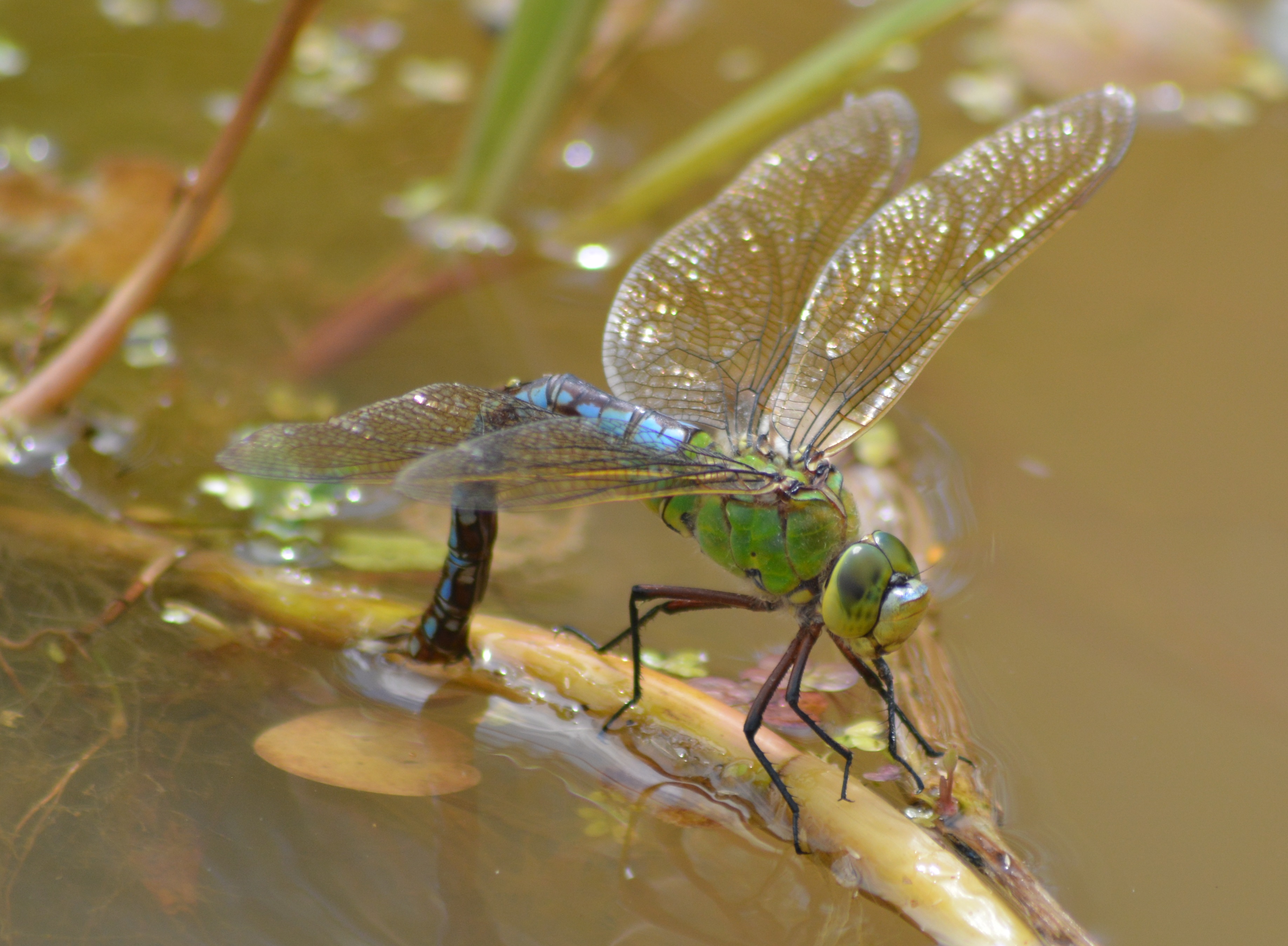
Female Emperor Dragonfly egg laying at the pond in July 2019 (photo Tony Hoskin)
The female Emperor Dragonfly was seen laying her eggs in several places around the pond and she was observed to turn 360 degrees while probing her tail in the water as if spreading her eggs in a circle.
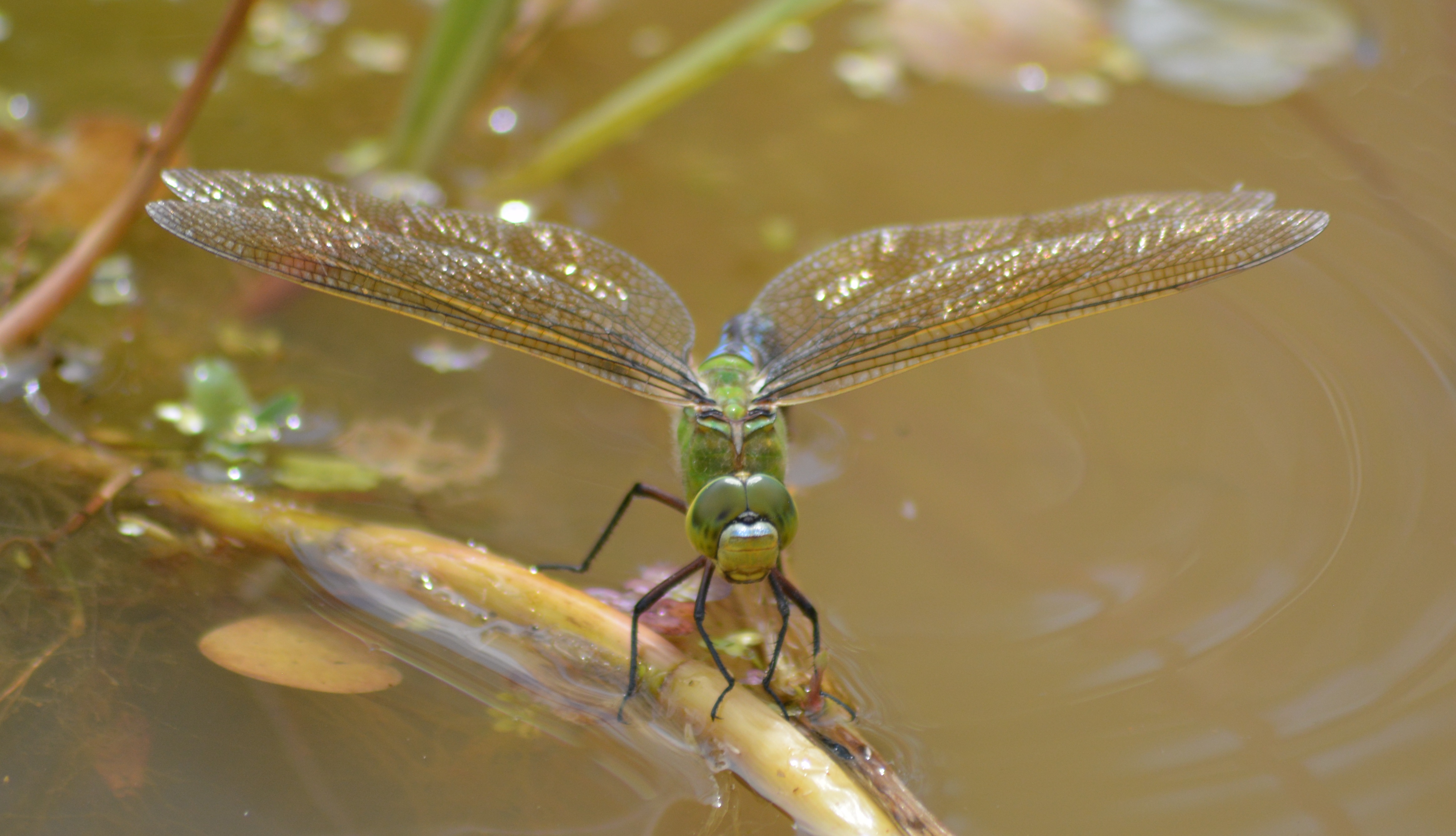
Female Emperor Dragonfly egg laying in a circle (photo Tony Hoskin)
Common Darter Dragonfly
On a warm day in summer, Common Darter dragonflies can frequently be seen basking on the circular seat in the middle of the woodland or resting on seed heads or vegetation in other areas around the site.
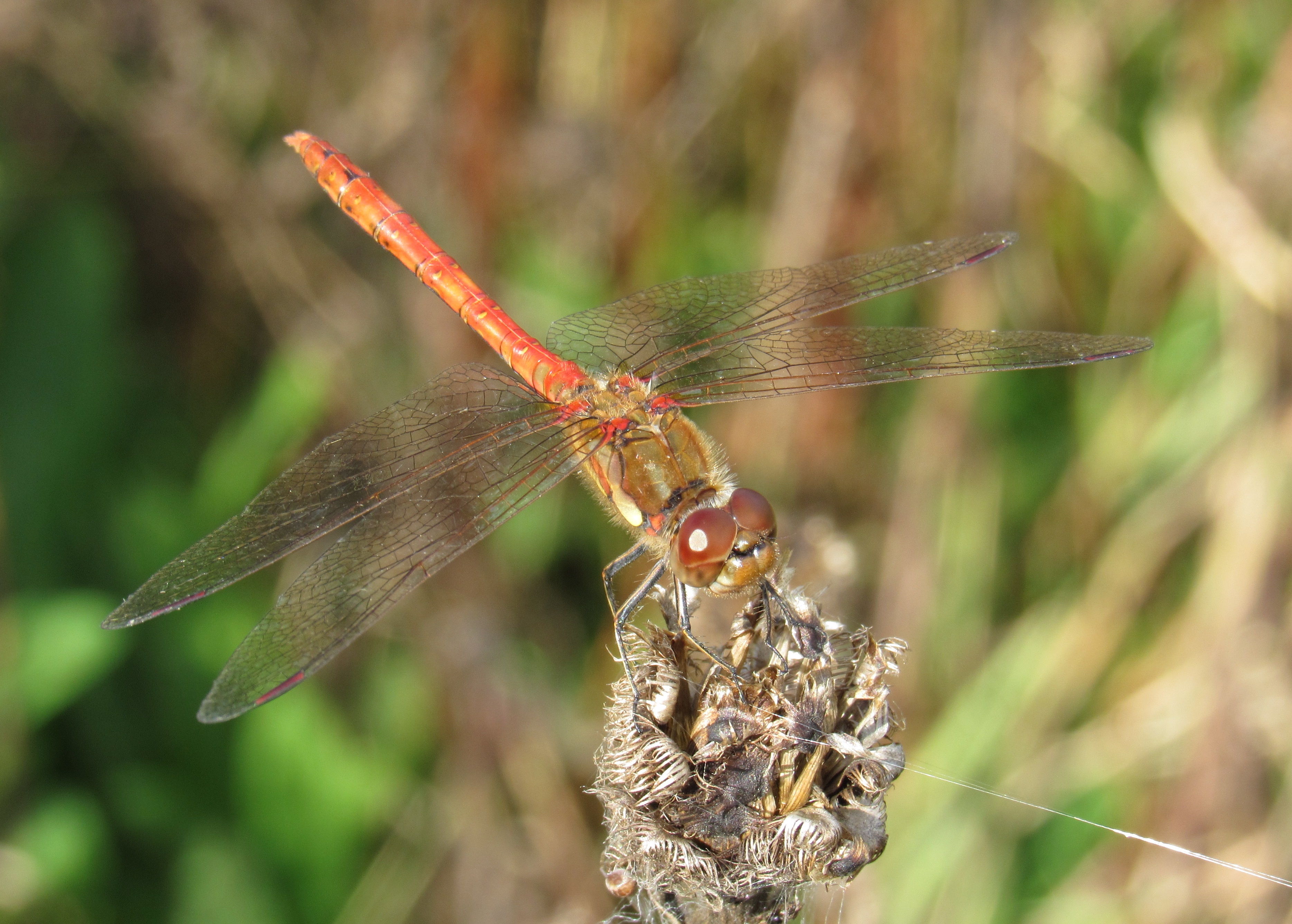
Common Darter male perching on a seedhead (photo Sue Ashton)
They are a small dragonfly and can be quite numerous at the woodland. Males are quite a bright red, while females are a more yellowish brown, though immature males are a similar colour to females and older females can develop reddish lines along their abdomen. Their flight period starts in April and can go on into November.
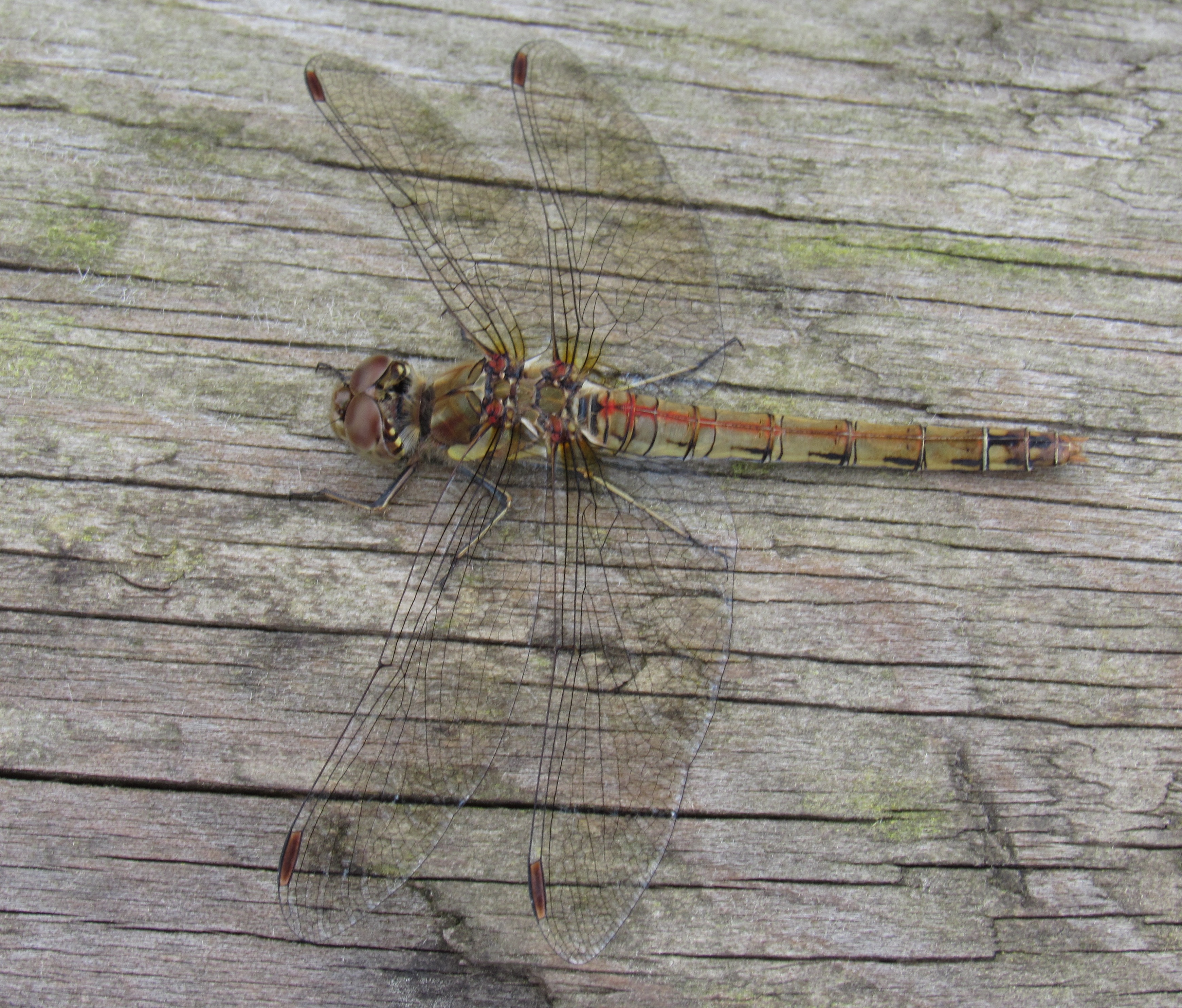
Common Darter female basking on the circular seat at the woodland (photo Sue Ashton)
Up to five mating couples were seen at the new pond in September 2019.
Two pairs of Common Darters mating at the pond in September 2019 (photo Tony Hoskin)
Migrant Hawker
This dragonfly searches for insect prey along hedgerows and can often been found resting on vegetation. They can be seen at the woodland but also come into gardens. The male is dark brown/black with paired blue spots along the abdomen (or lilac in an immature male); the female is brown with yellow spots.
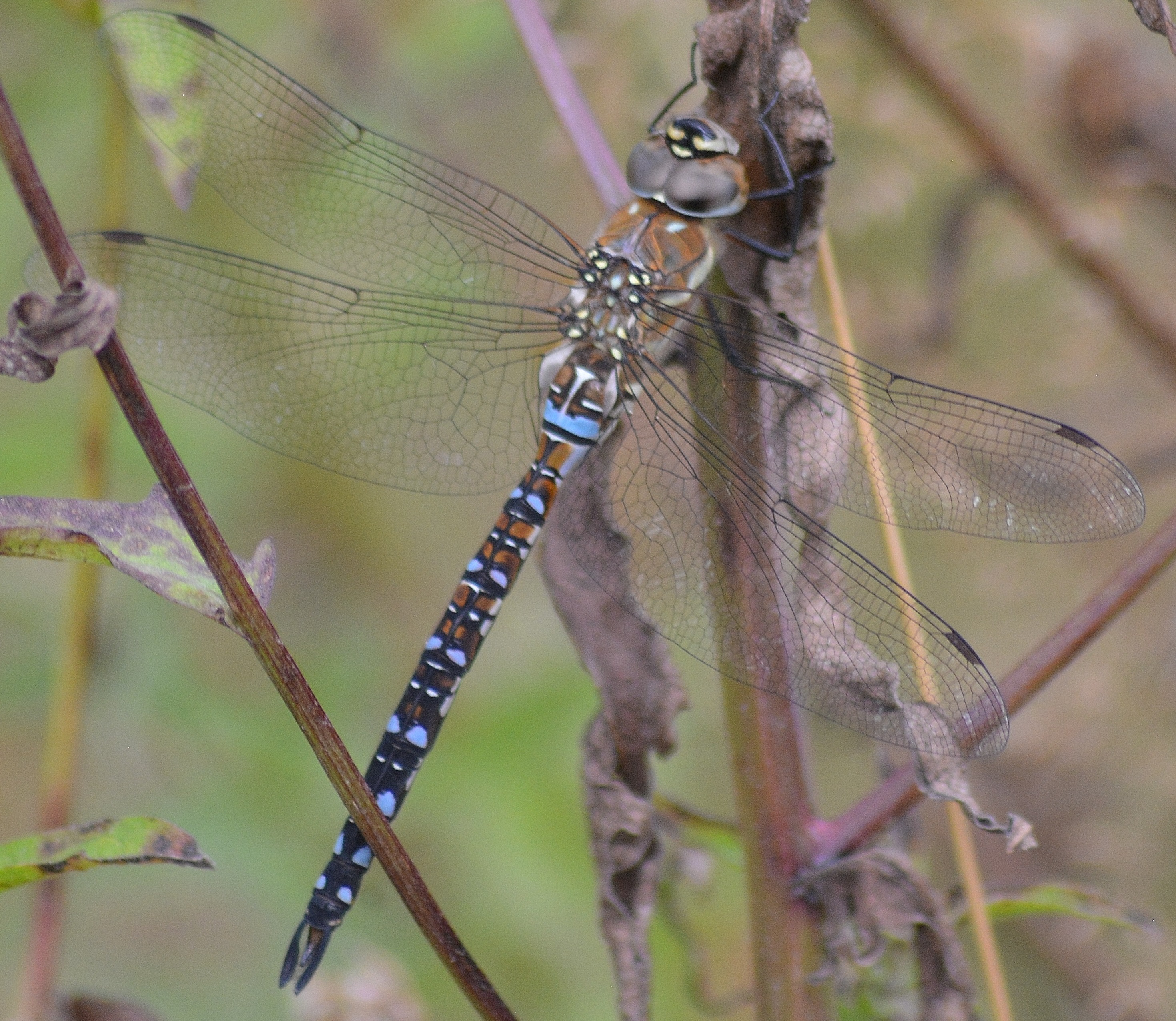
Male Migrant Hawker at the woodland in mid August 2019 (photo Tony Hoskin)
Southern Hawker
This hawker is apparently an inquisitive dragonfly. The male is dark with blue and green markings; the female is brown with bright green markings. The large yellow stripes on the thorax help distinguish this hawker from other hawkers. It can often be seen resting on vegetation as it hunts along hedgerows.
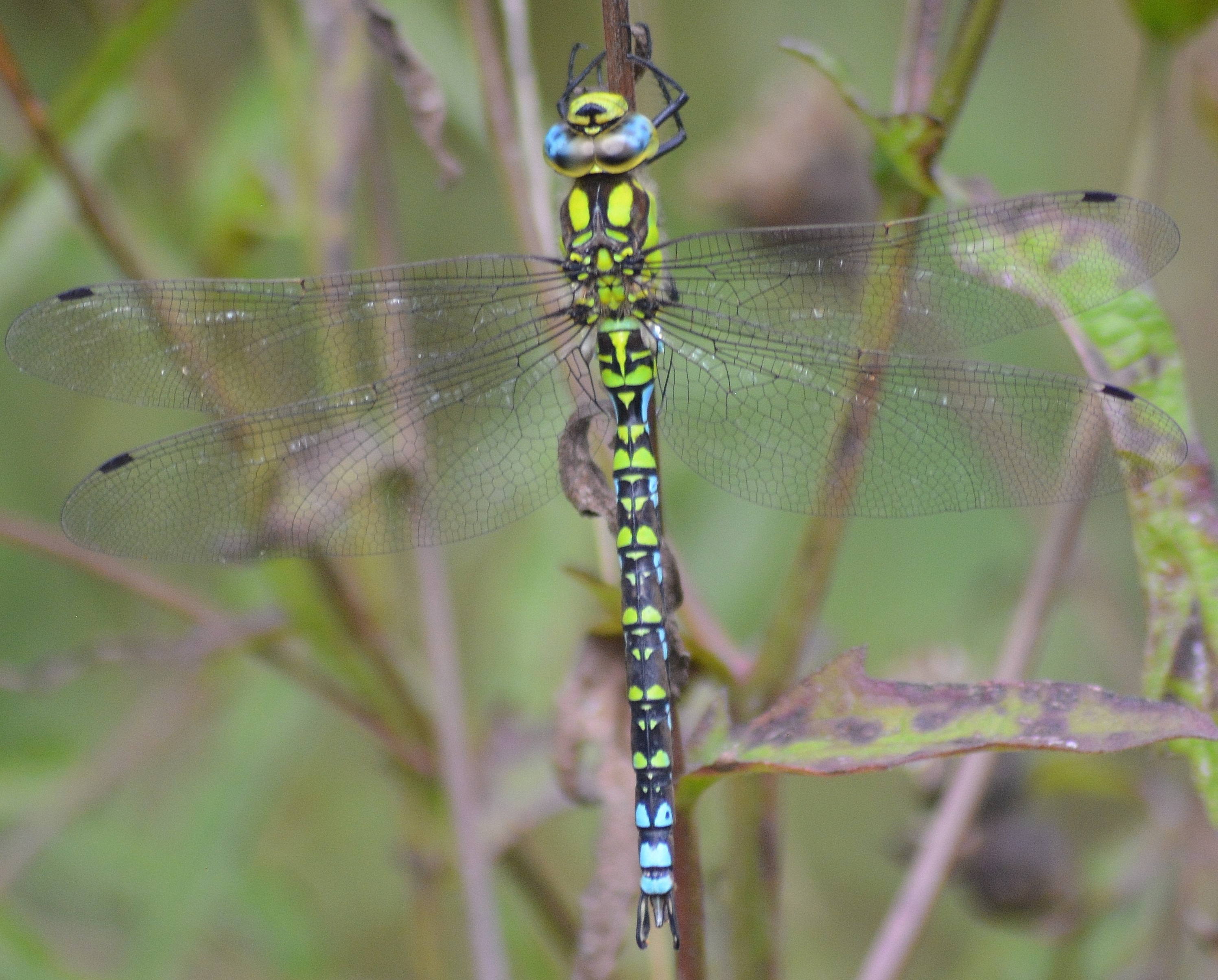
Male Southern Hawker at the woodland in mid August 2019 (photo Tony Hoskin)
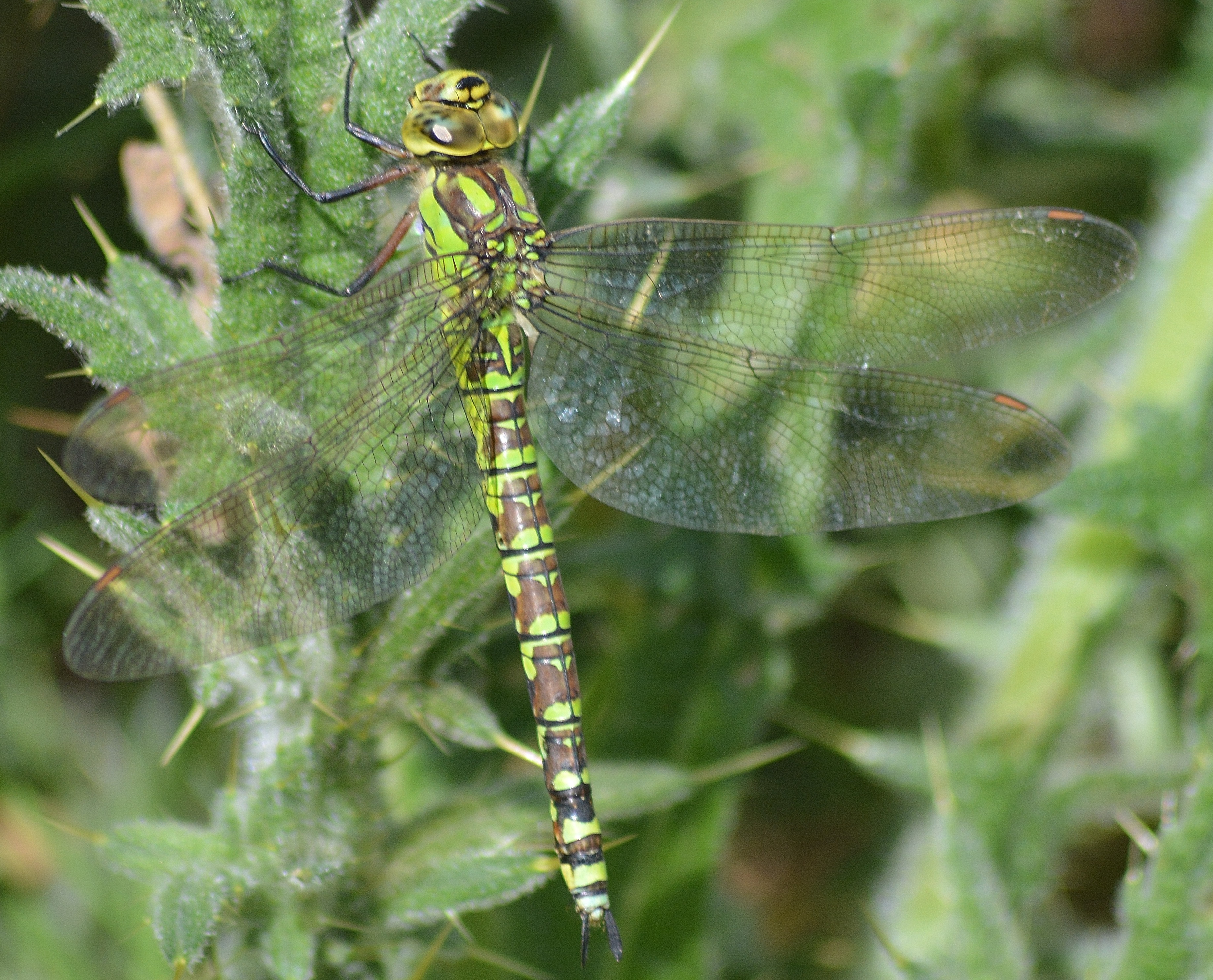
Female Southern Hawker at the woodland in early September 2019 (photo Tony Hoskin)
Brown Hawker
The golden brown colour of the wings of this dragonfly distinguishes it from other hawkers. Both males and females have brown bodies with small yellow or blue markings in the male and yellow markings in the female. The male has a noticeable ‘waist’ at the top of the abdomen, whereas the female has no waist. The picture shows a female which was seen laying eggs in the vegetation of the woodland pond in the summer of 2019.
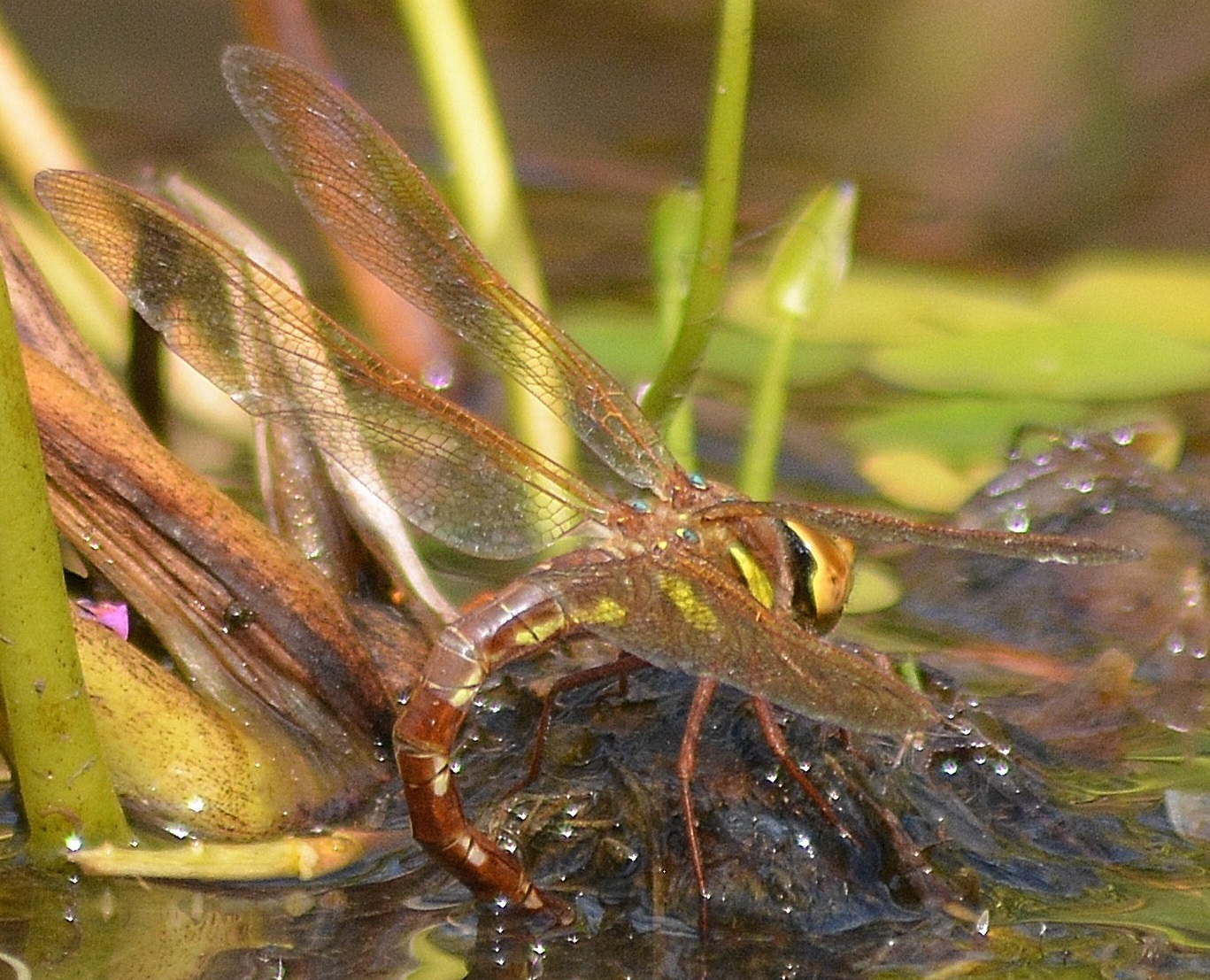
Female Brown Hawker egg laying at the pond in August 2019 (photo Tony Hoskin)
DAMSELFLIES
Banded Demoiselle
A very striking damselfly, the male Banded Demoiselle has a metallic blue body with a broad dark band across its wings. The female has a metallic green body with pale green wings which lack the band. The flight period is from April to September. The male pictured here was seen perching on willow by the pond in July 2019.
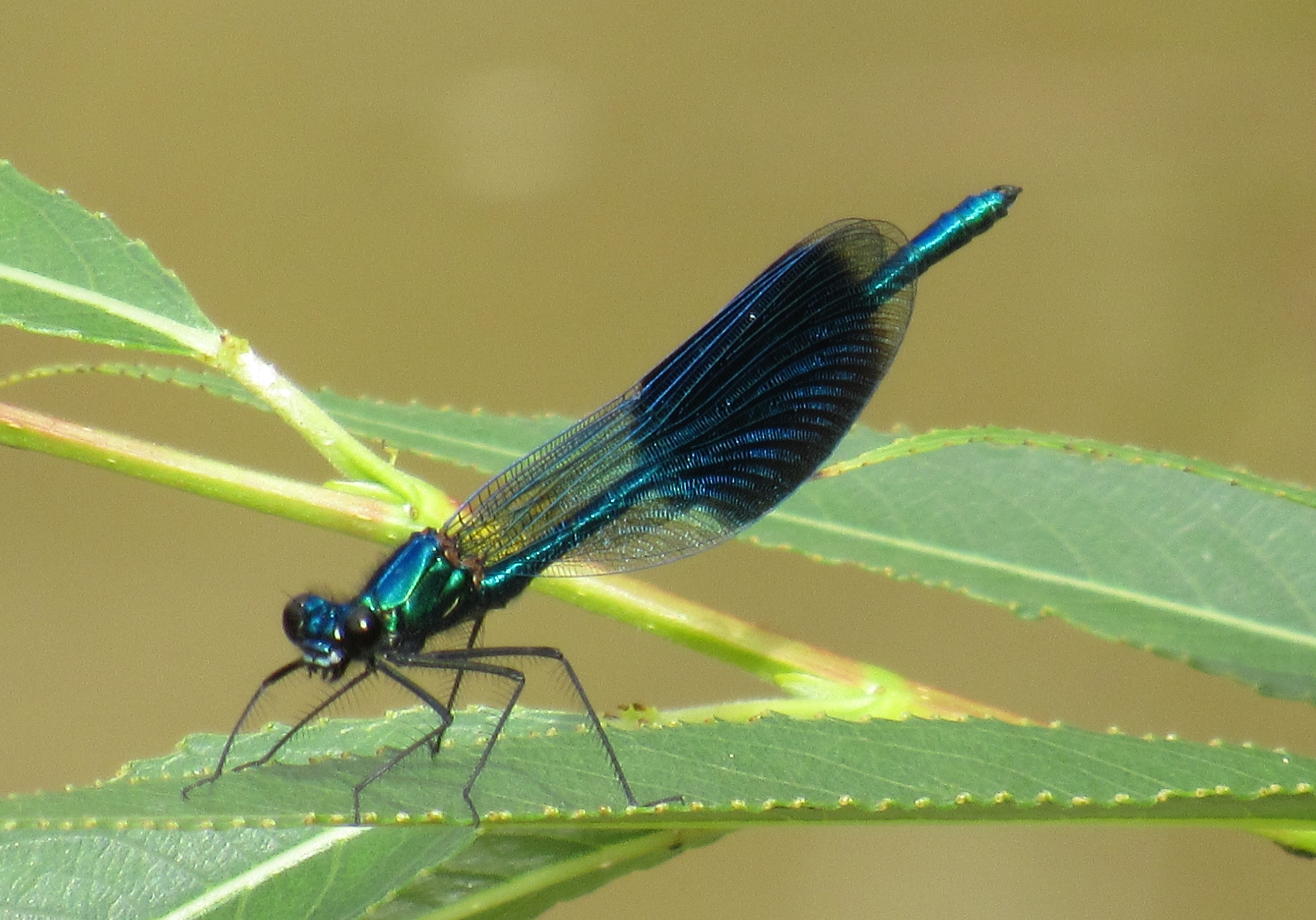
Male Banded Demoiselle in July 2019 (photo Sue Ashton)
Blue-tailed Damselfly
The male Blue-tailed Damselfly (pictured below) is blue with a blue tip to the tail and two-toned wing spots, but the female has several different colour forms. It is a common damselfly throughout Britain and can be found in a wide range of lowland habitats. Its flight period is April to October.
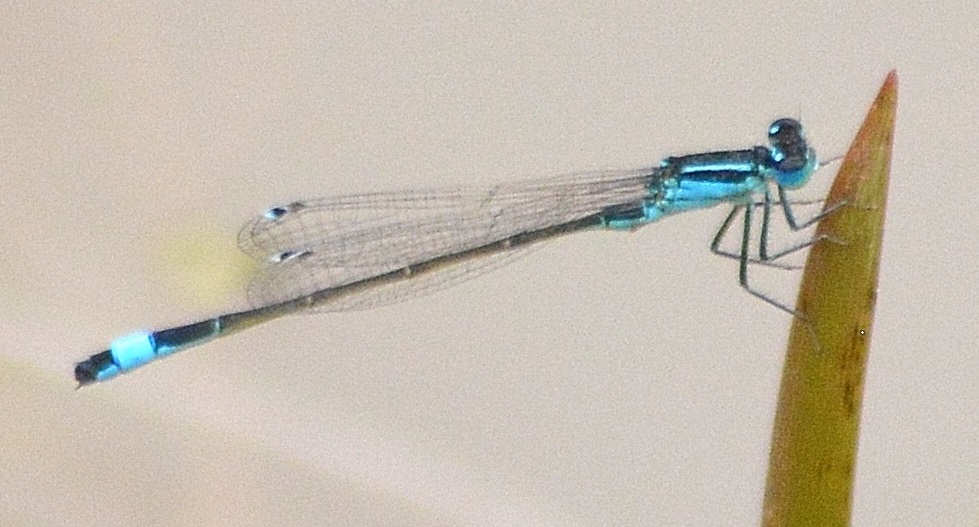
Blue-tailed Damselfly in July 2019 (photo Tony Hoskin)
Azure Damselfly
This is a widespread and common species which is very like the Common Blue Damselfly, but with different markings on its thorax. The male (pictured below) is blue with black markings, while the female is green or pale blue with more black. Their flight period is April to September.
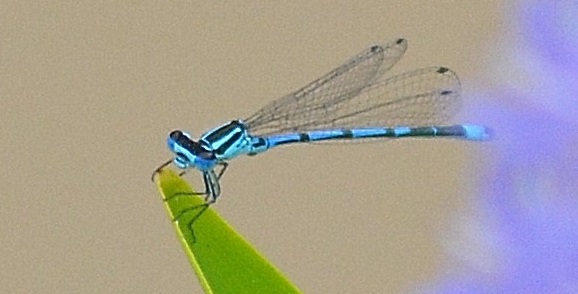
Azure Damselfly in July 2019 (photo Tony Hoskin)